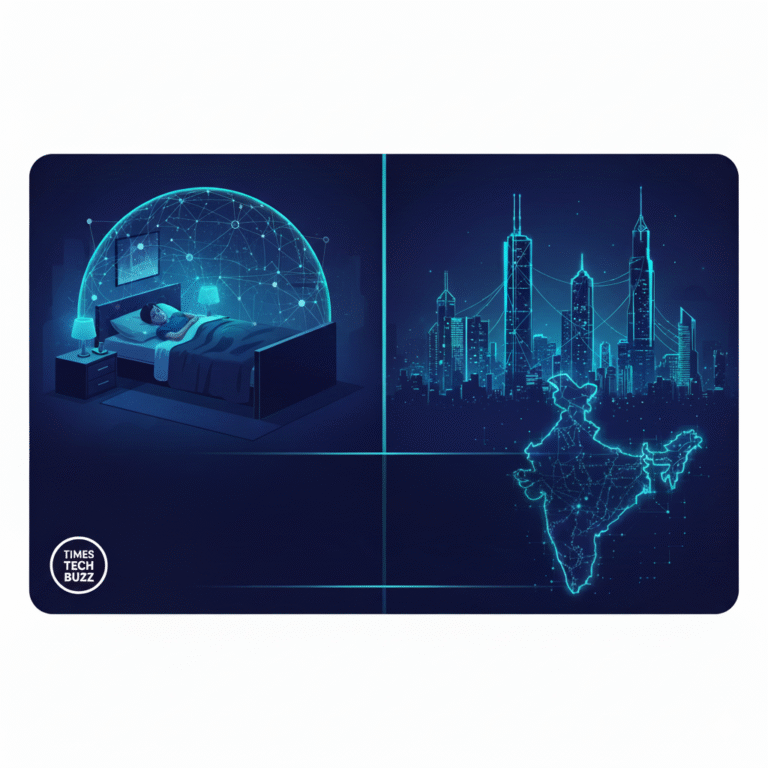Web3.0 is no longer a buzzword confined to developer forums or tech-savvy investors. It has become a foundational shift in how we conceptualize and interact with the internet. While much has been said about what Web3.0 is, this guide focuses on a deeper exploration: the architecture behind Web3.0. If you already understand that Web3.0 is a decentralized, user-centric evolution of the internet, you might now ask: how does it actually work? This blog is your beginner-friendly yet technically insightful walkthrough of Web3.0’s inner framework.
1. The Modular Design Philosophy of Web3.0
Unlike the monolithic structures of Web1.0 and the centralized service-based architecture of Web2.0, Web3.0 embraces a modular and distributed design.
1.1 Interoperability at the Core
Web3.0 protocols are designed to work together. For example, decentralized storage (IPFS), smart contracts (Ethereum), and identity layers (ENS) can integrate seamlessly to create composite applications, often called dApps (decentralized applications).
1.2 Open-Source Development
Most Web3.0 systems are open-source, allowing developers worldwide to audit, contribute to, and fork codebases. This accelerates innovation and security.
2. The Foundational Layers of Web3.0 Architecture
To understand Web3.0’s architecture, think of it as a multi-layered cake, where each layer provides essential functionality.
2.1 Protocol Layer (Layer 0)
This is the backbone of Web3.0. It includes:
- Networking protocols like libp2p
- Consensus mechanisms such as Proof of Work (PoW), Proof of Stake (PoS), or delegated PoS
2.2 Blockchain Layer (Layer 1)
This is where the actual transaction ledger exists. Examples:
- Ethereum: Smart contract platform
- Avalanche: High-speed, scalable blockchain
- Polkadot: Cross-chain interoperability
2.3 Middleware Layer
These protocols add additional features, such as:
- Oracles (Chainlink) that connect smart contracts to external data
- Indexing (The Graph) for faster data querying
2.4 Application Layer (Layer 2 and above)
This is where the end-user experience is shaped through:
- Decentralized apps (dApps)
- Web3 wallets (MetaMask, Phantom)
- NFT marketplaces and DeFi platforms
3. Decentralized Data Layer
In Web3.0, data doesn’t reside in a single server but is distributed across nodes.
3.1 Distributed File Systems
- IPFS (InterPlanetary File System): Uses content-addressable storage
- Arweave: Designed for permanent data storage
3.2 Decentralized Databases
- OrbitDB and GunDB enable database functionalities without central servers.
3.3 Data Availability and Redundancy
Data is often replicated across multiple nodes, ensuring high availability and censorship resistance.
4. Identity and Authentication Layers
Identity in Web3.0 is not just about logging in—it’s about controlling your data.
4.1 Self-Sovereign Identity (SSI)
Users own their digital identities using:
- Decentralized Identifiers (DIDs)
- Verifiable Credentials
4.2 ENS and Name Services
The Ethereum Name Service (ENS) allows mapping human-readable names to wallet addresses, similar to a DNS system but decentralized.
4.3 Wallets as Identity Managers
Wallets such as MetaMask and WalletConnect manage public-private key pairs that authenticate and authorize user actions.
5. Smart Contracts: The Logic Layer
Smart contracts are self-executing scripts stored on the blockchain.
5.1 How They Work
- Triggered by transactions
- Immutable once deployed
- Govern logic in dApps
5.2 Languages and Platforms
- Solidity for Ethereum
- Rust for Solana
5.3 Limitations
- Gas costs
- Upgradability challenges
- Security vulnerabilities (e.g., reentrancy attacks)
6. The Role of Oracles
Blockchains can’t access real-world data on their own.
6.1 What Are Oracles?
Oracles act as bridges between blockchains and the external world.
6.2 Key Oracle Services
- Chainlink
- Band Protocol
6.3 Use Cases
- DeFi price feeds
- Weather data for insurance
- Random number generation for games
7. Governance Mechanisms
Decentralized systems require decentralized governance.
7.1 On-Chain Governance
Votes are cast using tokens or governance rights embedded in smart contracts.
7.2 DAOs (Decentralized Autonomous Organizations)
Code-based entities governed by token holders.
7.3 Off-Chain Governance
Discussion platforms like forums or Discord communities where consensus forms informally before formal votes.
8. Scalability and Layer 2 Solutions
Blockchains can be slow and expensive.
8.1 What Are Layer 2s?
Secondary protocols that run on top of Layer 1 blockchains.
8.2 Types of Layer 2s
- Rollups (Optimistic and ZK-Rollups)
- State Channels
- Plasma Chains
8.3 Examples
- Arbitrum
- Polygon
9. Security Architecture
Security is essential in trustless environments.
9.1 Cryptography
- SHA-256 and Keccak-256 for hashing
- Elliptic Curve Digital Signature Algorithm (ECDSA)
9.2 Consensus Security
The economic and cryptographic guarantees provided by consensus mechanisms prevent tampering.
9.3 Audits and Formal Verification
Projects often undergo audits from firms like CertiK or Quantstamp to detect vulnerabilities.
10. UX and Access Layers
Web3.0 platforms need to be accessible to non-technical users.
10.1 Web3 Browsers and Extensions
- Brave Browser
- MetaMask and WalletConnect integrations
10.2 Mobile dApp Browsers
- Trust Wallet
- Opera’s crypto browser
10.3 SDKs and Toolkits
- Web3.js
- Ethers.js
- Moralis
Conclusion
Understanding Web3.0 architecture is essential for anyone wanting to do more than just invest in crypto or mint an NFT. From decentralized identity systems to smart contracts and data protocols, Web3.0 is a complex but beautifully interconnected landscape. As we move toward a more open and decentralized web, knowing how the underlying system works empowers users, developers, and organizations to innovate responsibly and sustainably.
Disclaimer: This blog is intended for educational purposes only. While it strives to maintain technical accuracy, readers should consult additional resources and professionals before making decisions based on this information.
Fresh 10 FAQs for “Understanding Web3.0 Architecture“:
- What is the architecture of Web3.0 built upon?
Web3.0 architecture is built on blockchain technology, smart contracts, and decentralized data storage like IPFS, enabling transparency and trustless interactions. - How do smart contracts fit into Web3.0 architecture?
Smart contracts act as the logic layer in Web3, automating trust-based interactions and transactions between users or applications. - What role does blockchain play in Web3 infrastructure?
Blockchain provides the foundational layer for consensus, security, and decentralization in Web3 systems. - What is IPFS and why is it used in Web3?
The InterPlanetary File System (IPFS) is a decentralized storage protocol used in Web3 to share and access files without central servers. - What are DAOs in Web3 architecture?
DAOs (Decentralized Autonomous Organizations) are governance mechanisms that run via smart contracts and allow community-led decisions. - What is Layer 2 in Web3 architecture?
Layer 2 solutions are built on top of blockchains like Ethereum to improve scalability and reduce transaction costs. - Are Web3.0 applications secure?
While more secure than Web2, Web3 still faces challenges like contract bugs and private key theft—security audits and best practices are essential. - What is a typical Web3 tech stack?
A Web3 stack includes blockchain (Ethereum/Solana), smart contracts (Solidity), frontend (React), and wallet integration (Metamask). - What are some examples of Web3 use cases?
Examples include DeFi apps, NFT platforms, decentralized storage systems, and identity verification systems. - Is Web3.0 architecture sustainable for mass adoption?
With emerging solutions like sharding, Layer 2, and eco-friendly blockchains, Web3 architecture is evolving to support large-scale applications.









+ There are no comments
Add yours